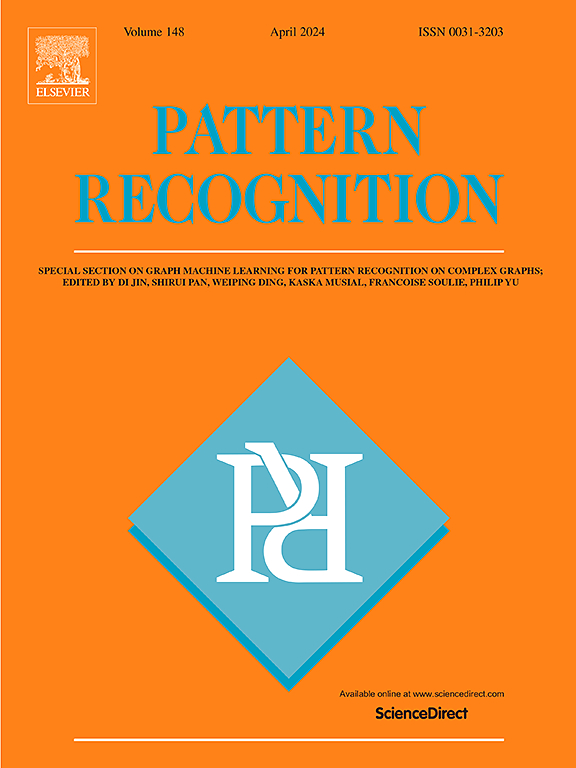Learning embedded label-specific features for partial multi-label learning
IF 7.5
1区 计算机科学
Q1 COMPUTER SCIENCE, ARTIFICIAL INTELLIGENCE
引用次数: 0
Abstract
Partial multi-label learning (PML) aims to learn from instances with weak supervision, where each instance is associated with a set of candidate labels, among which only a subset is valid. Most existing approaches rely on identical feature representations to distinguish all class labels, overlooking the inherent distinctiveness of different labels, which leads to suboptimal model performance. Although recent studies have attempted to address this limitation by tailoring label-specific features, critical shortcomings remain: (1) isolated processing of feature tailoring and label disambiguation fails to leverage their synergistic relationship, and (2) direct extraction of label-specific features from the original feature space tends to yield unreliable results due to inherent noise and disturbances. This paper proposes a unified PML framework that jointly performs label disambiguation, embedded label-specific feature learning, and model induction. Within this framework, identifying ground-truth labels and generating label-specific features mutually reinforce each other, leading to continuous refinement. By customizing features from a compact and noise-free embedded space, the framework further ensures robustness and reliability in learning. Specifically, low-rank and sparse decomposition is employed to separate ground-truth labels from noisy ones, while a linear embedding discriminant model simultaneously generates embedded label-specific features and induces the model. Moreover, we enhance the classifier’s accuracy by assuming that the input and output spaces share local geometric structures, encouraging similar instances to have similar label sets. Extensive experiments on sixty-six real-world and synthetic datasets demonstrate that the proposed approach significantly outperforms state-of-the-art methods.
学习局部多标签学习的嵌入式标签特定特征
部分多标签学习(Partial multi-label learning, PML)旨在从弱监督的实例中学习,其中每个实例与一组候选标签相关联,其中只有一个子集是有效的。大多数现有的方法依赖于相同的特征表示来区分所有的类标签,忽略了不同标签的固有独特性,这导致了次优的模型性能。尽管最近的研究试图通过定制标签特定特征来解决这一限制,但仍然存在关键缺陷:(1)特征定制和标签消歧的孤立处理未能利用它们的协同关系;(2)由于固有的噪声和干扰,从原始特征空间中直接提取标签特定特征往往会产生不可靠的结果。本文提出了一个统一的PML框架,该框架联合执行标签消歧、嵌入式标签特定特征学习和模型归纳。在这个框架中,识别真值标签和生成特定于标签的特征相互加强,从而导致持续的改进。通过从紧凑和无噪声的嵌入式空间定制特征,该框架进一步确保了学习的鲁棒性和可靠性。具体而言,采用低秩和稀疏分解来分离地面真值标签和噪声标签,而线性嵌入判别模型同时生成嵌入标签特定特征并诱导模型。此外,我们通过假设输入和输出空间共享局部几何结构来提高分类器的准确性,鼓励相似的实例具有相似的标签集。在66个真实世界和合成数据集上进行的大量实验表明,所提出的方法明显优于最先进的方法。
本文章由计算机程序翻译,如有差异,请以英文原文为准。
求助全文
约1分钟内获得全文
求助全文
来源期刊

Pattern Recognition
工程技术-工程:电子与电气
CiteScore
14.40
自引率
16.20%
发文量
683
审稿时长
5.6 months
期刊介绍:
The field of Pattern Recognition is both mature and rapidly evolving, playing a crucial role in various related fields such as computer vision, image processing, text analysis, and neural networks. It closely intersects with machine learning and is being applied in emerging areas like biometrics, bioinformatics, multimedia data analysis, and data science. The journal Pattern Recognition, established half a century ago during the early days of computer science, has since grown significantly in scope and influence.
 求助内容:
求助内容: 应助结果提醒方式:
应助结果提醒方式:


